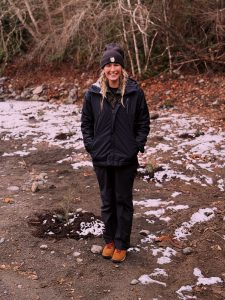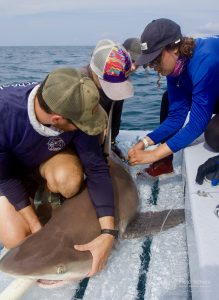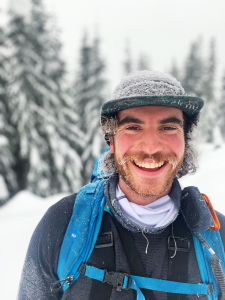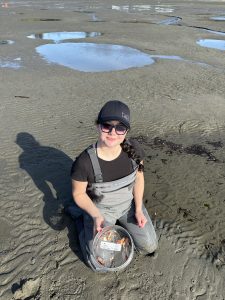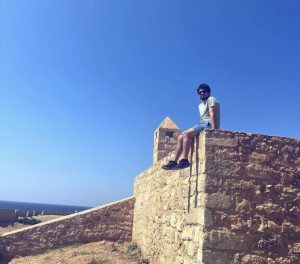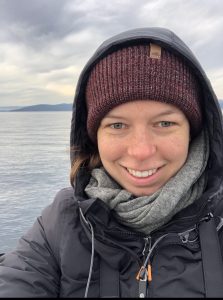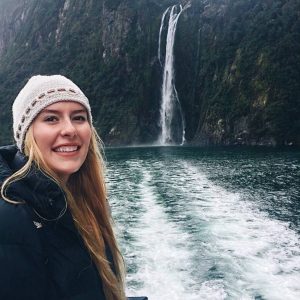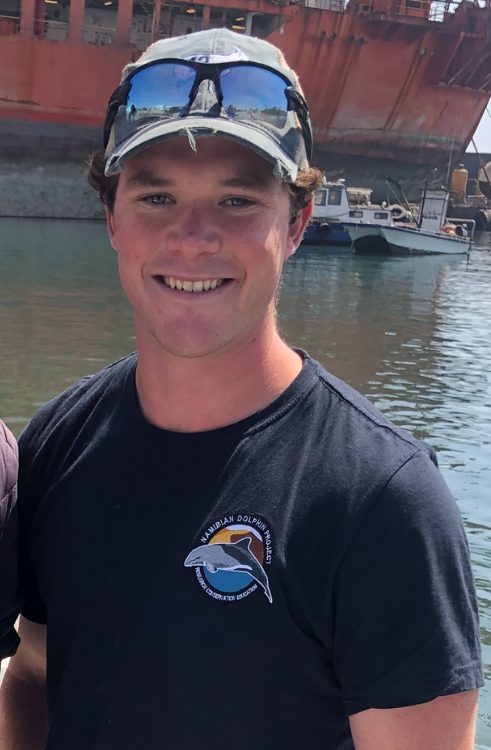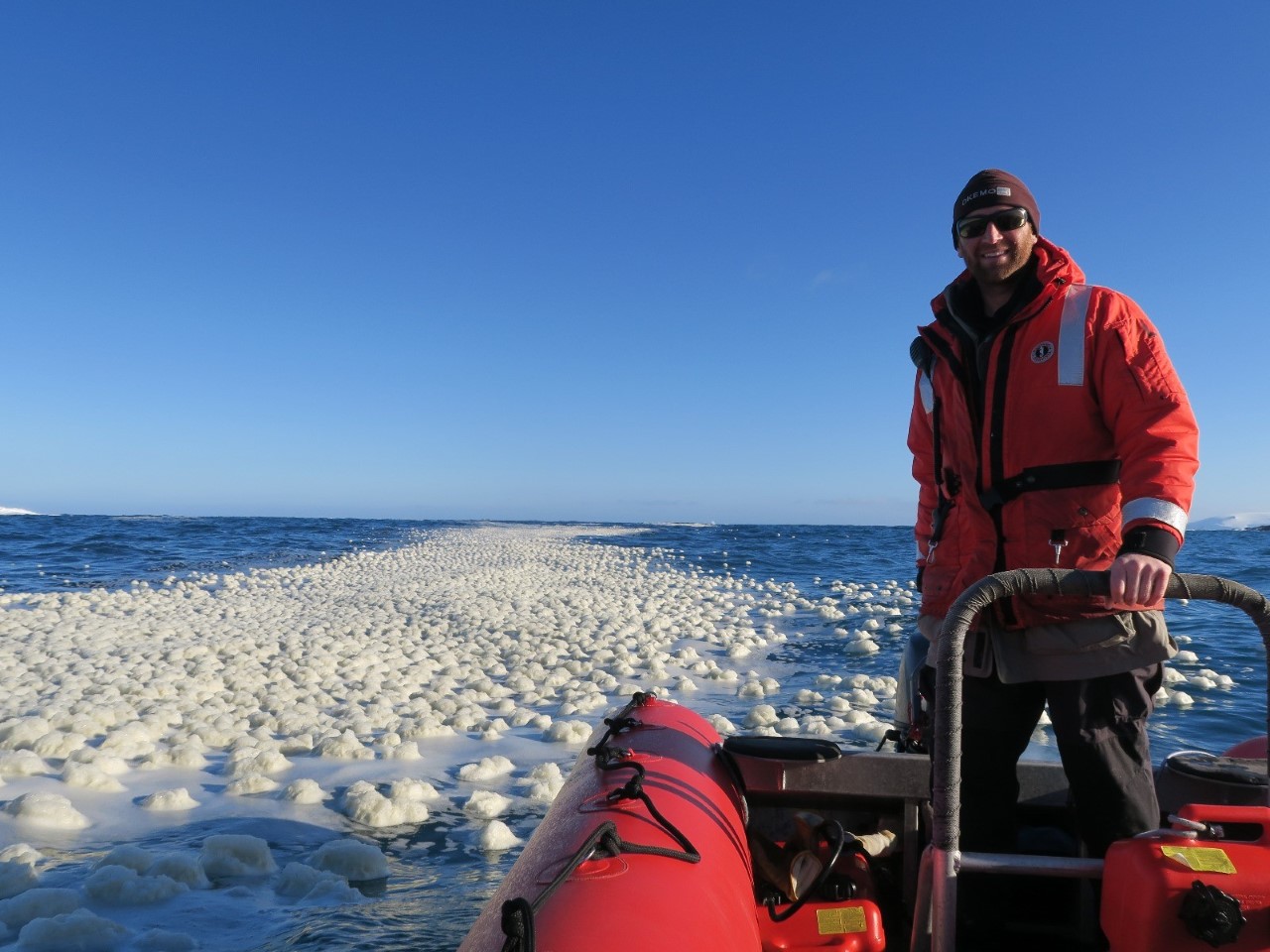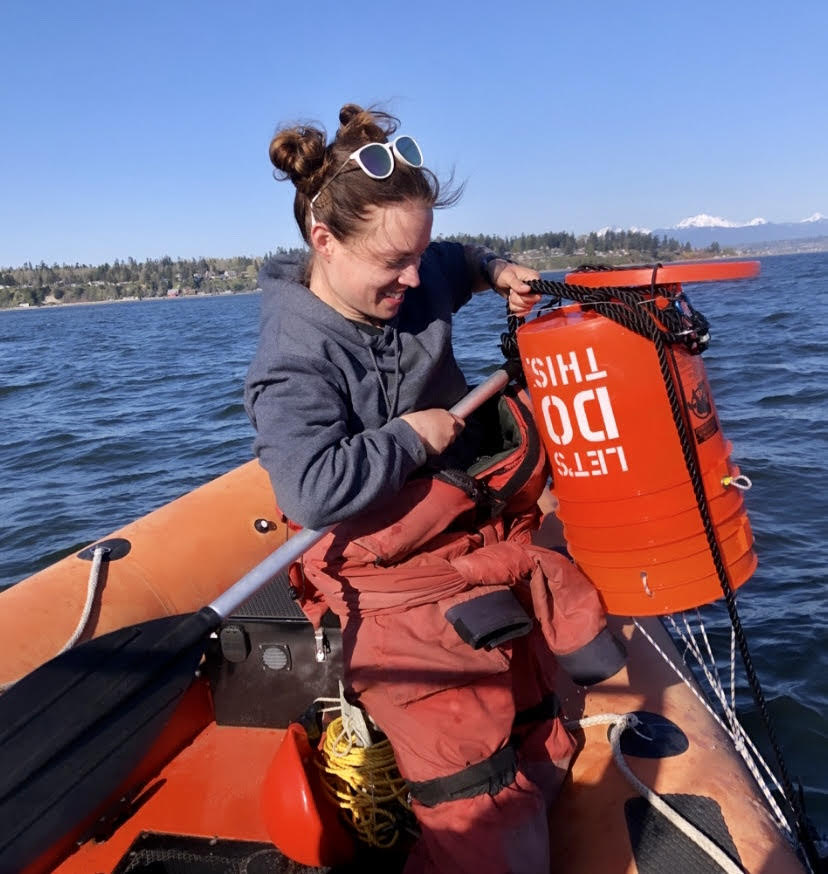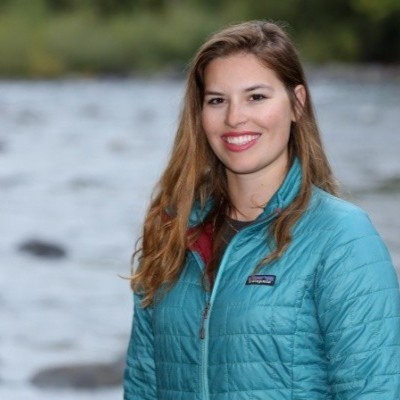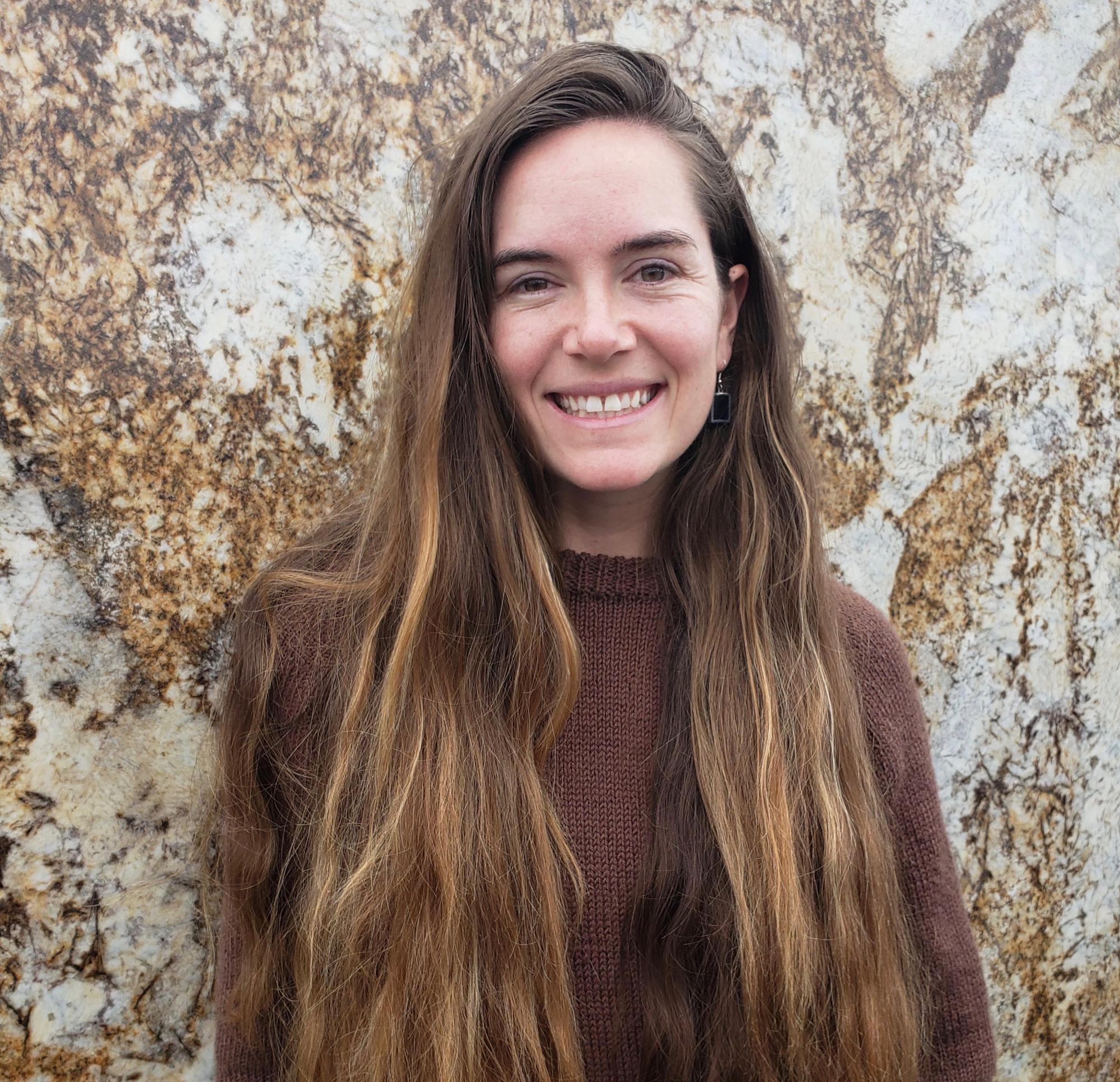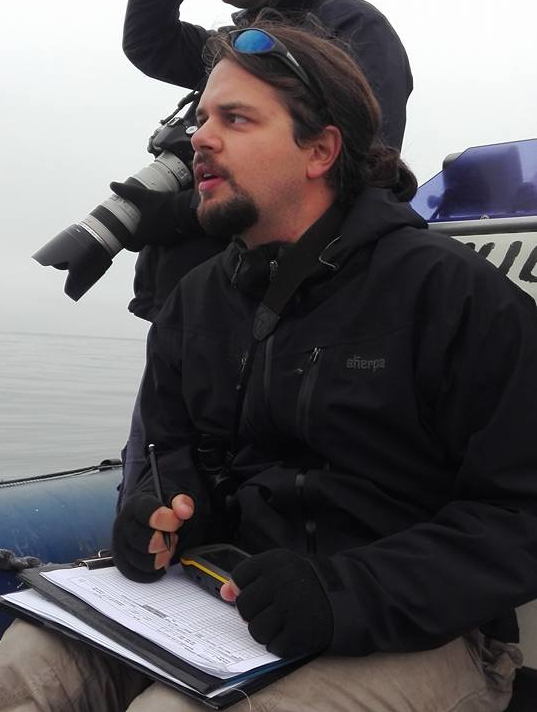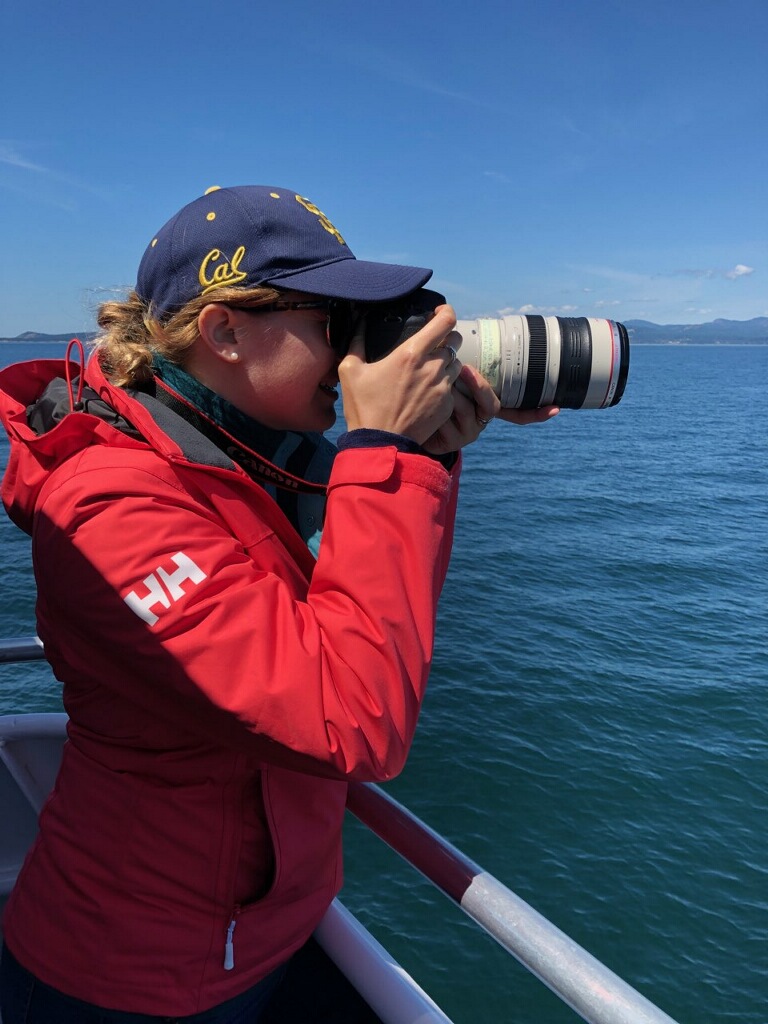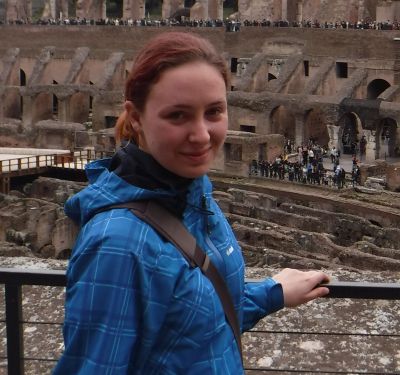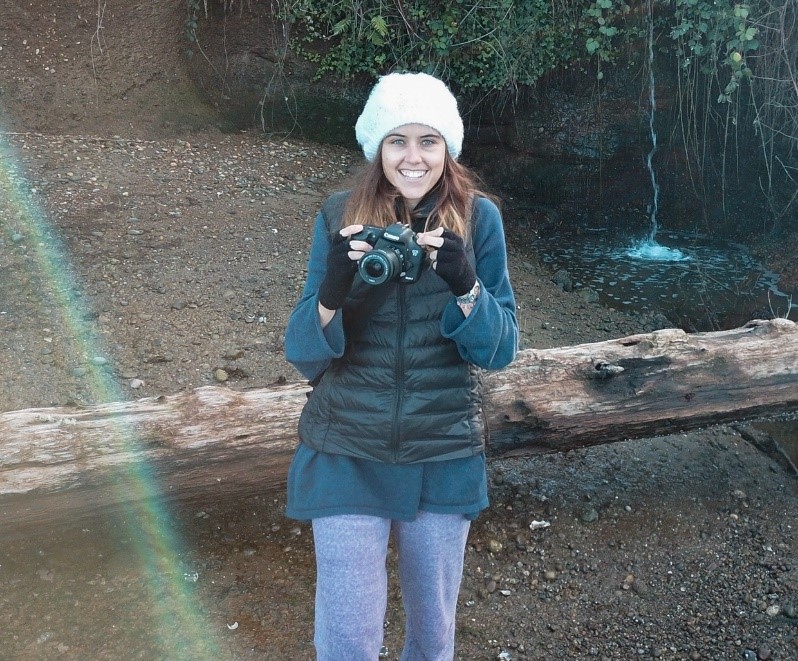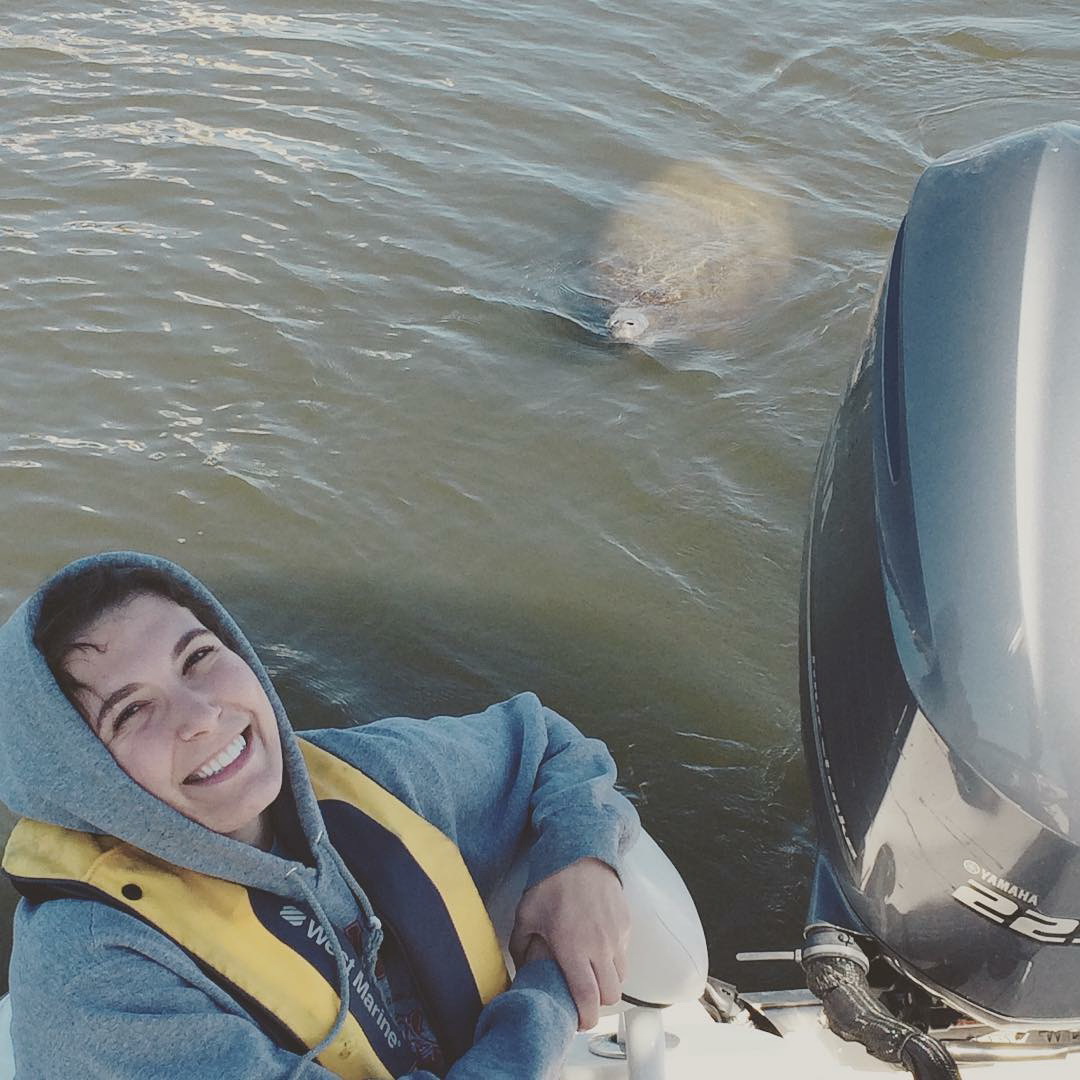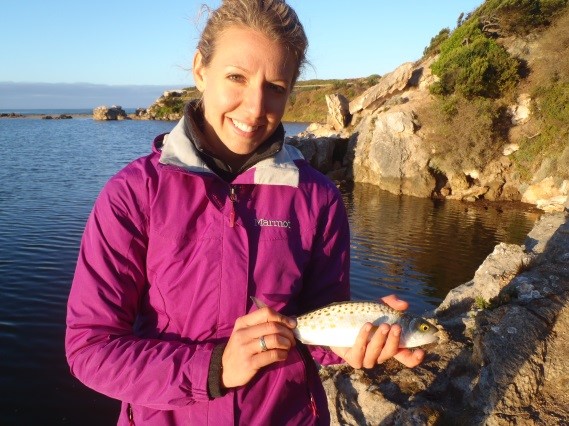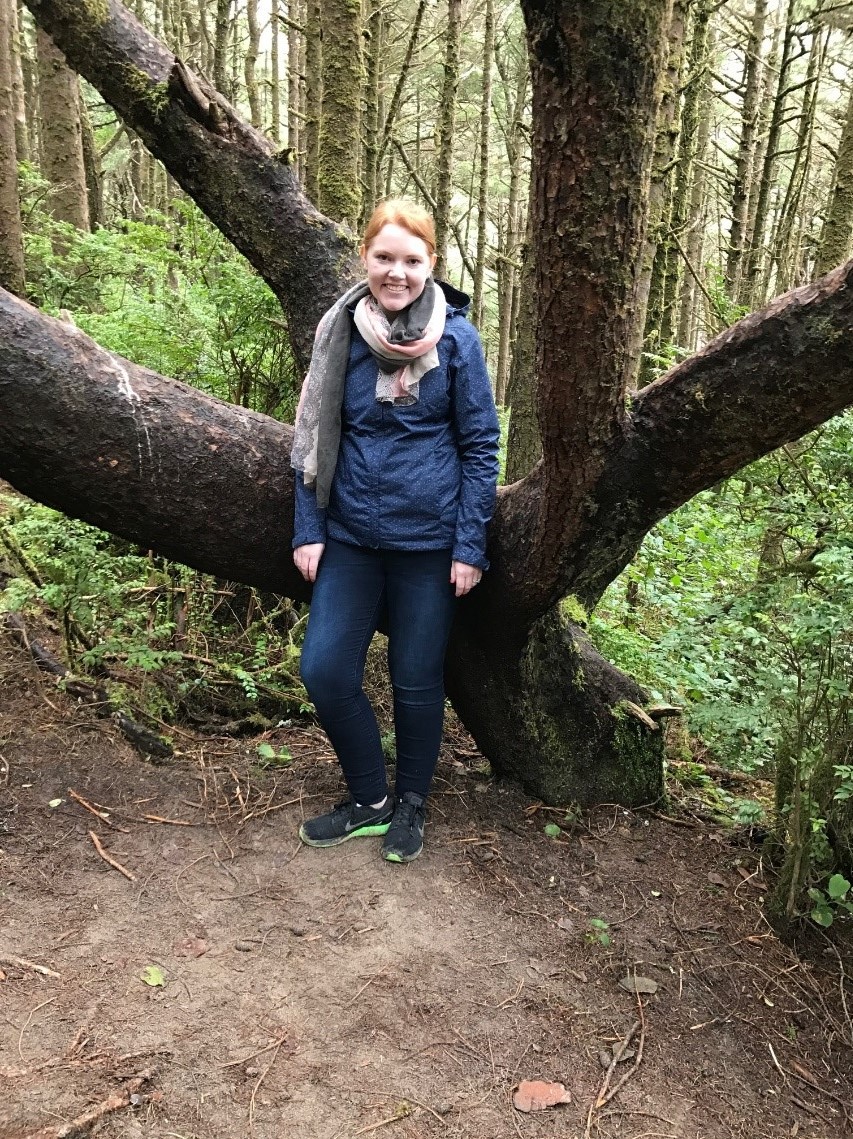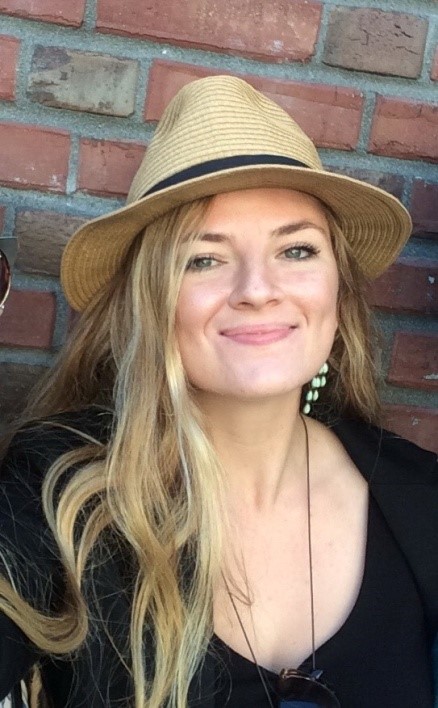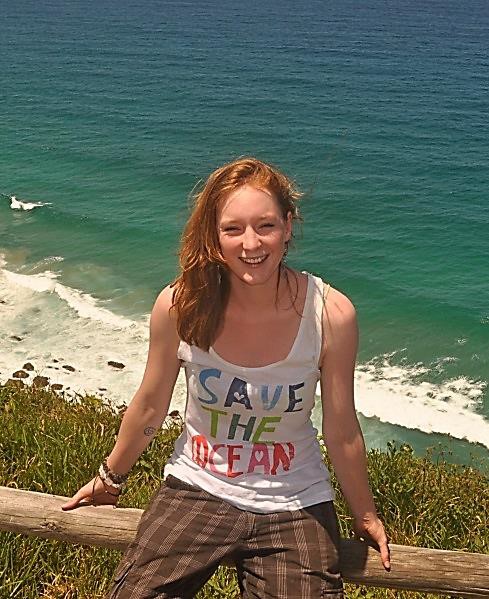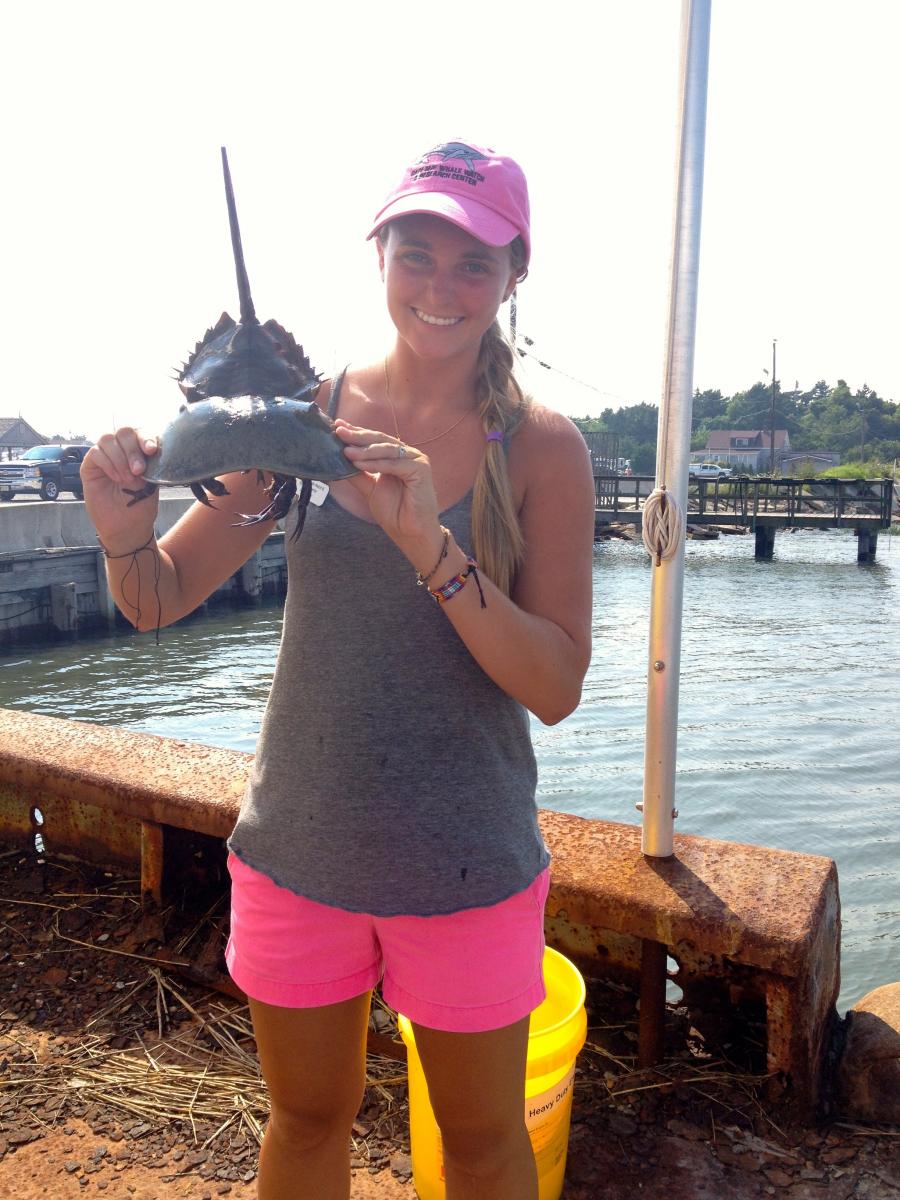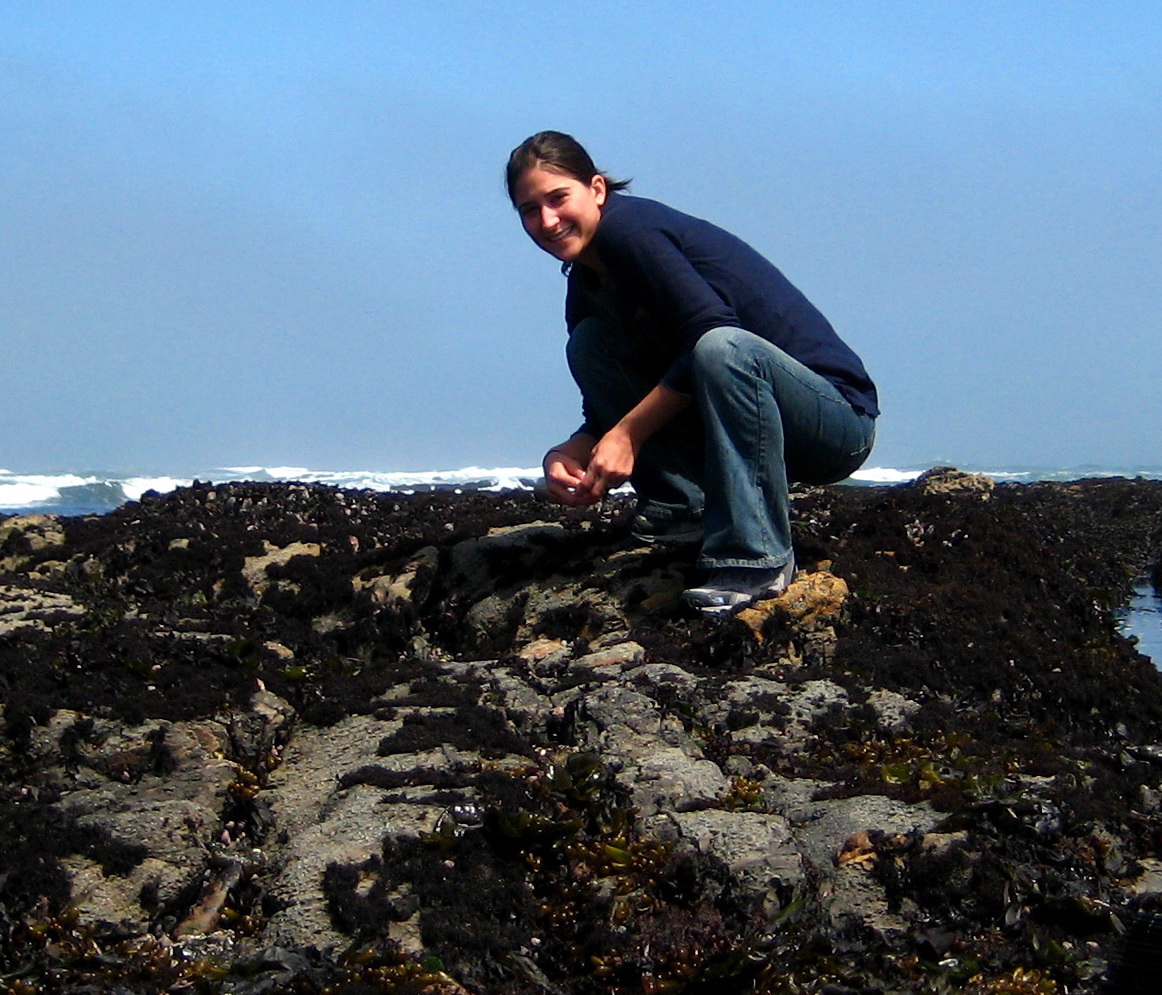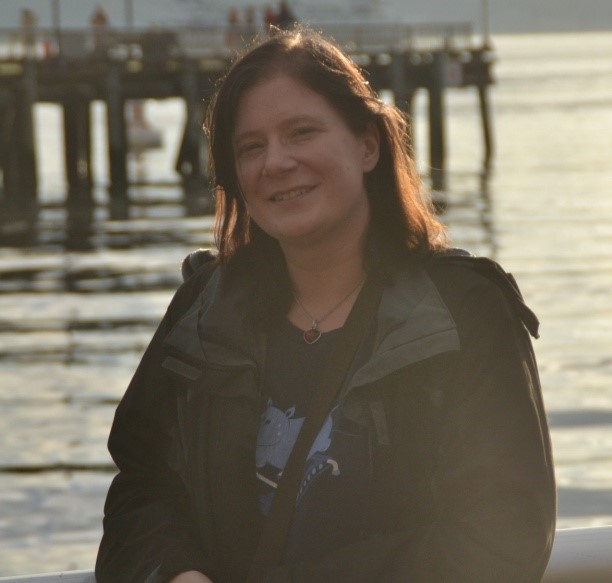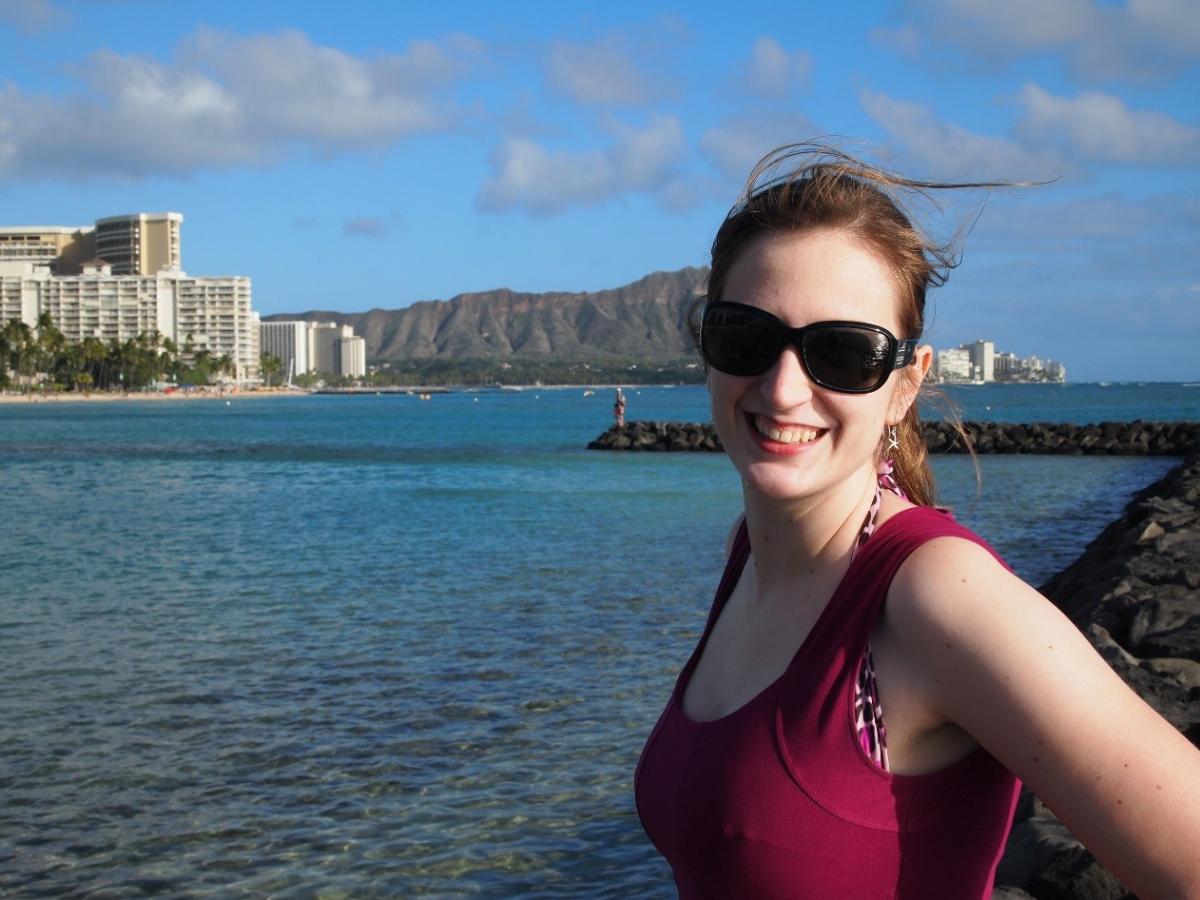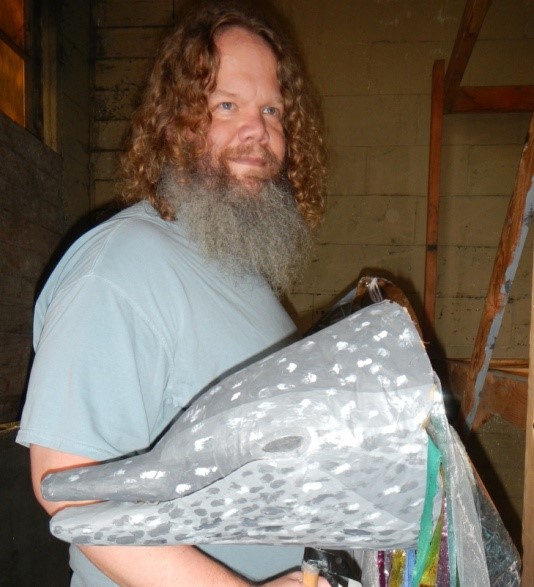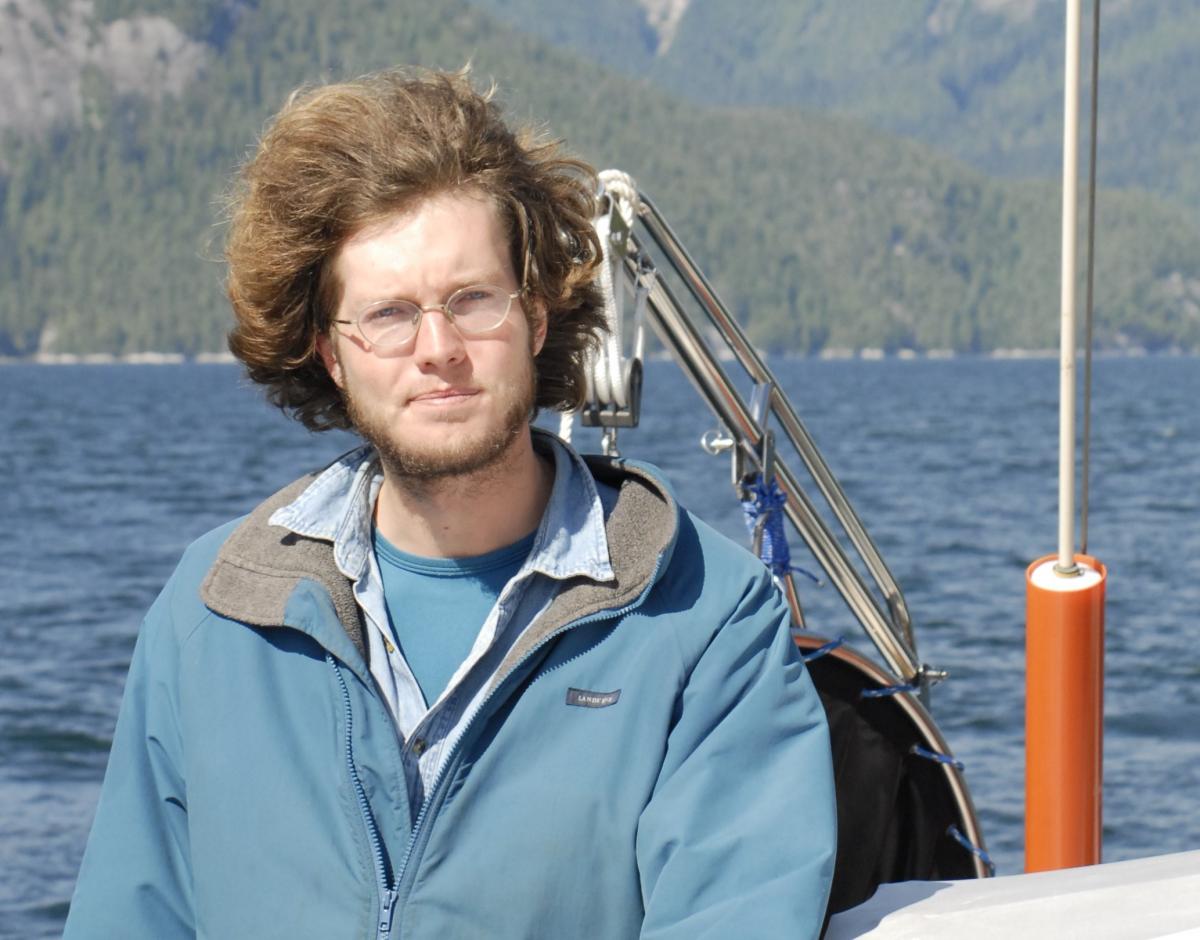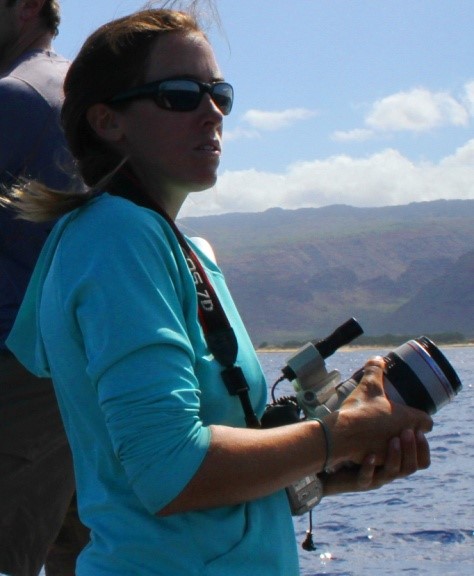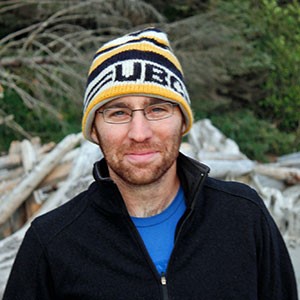Click here to learn more about graduate positions at CRC, including details on how to apply.
Current and Past Graduate Students
| 2025 | |
Emma Stock
| Hi, I’m Emma! I am a graduate student in the Master of Environmental Studies program at The Evergreen State College. I earned my bachelor’s degree in biology, with a minor in chemistry, from Bellevue University in Nebraska. For my undergraduate thesis, I conducted a molecular project using DNA extraction, primer design, qPCR, and whole genomic library preparation to analyze the remaining three northern Macrhybopsis species. This work contributed to completing a phylogenetic tree of the genus, with implications for conservation strategies across the Mississippi River basin. I also completed a research and development internship at Streck, a biotechnology company, where I assisted in developing new hematology controls and cell stabilization tubes. I began my internship with Cascadia Research Collective in April 2025 in the Hawai‘i office, where I have been working on photo-identification of bottlenose dolphins and have assisted in grey whale and harbor seal necropsies. My master’s thesis focuses on assessing mouthline and dorsal fin injuries as indicators of fisheries interactions in Hawaiian pygmy killer whales. Originally from the Midwest, I’m excited to continue exploring the Pacific Northwest and I’m grateful for the opportunity to be part of Cascadia’s team. |
| 2024 | |
Antoinette Falkenstein
| Hi! My name is Antoinette, but I go by Anna. Currently, I am a graduate student at the University of Miami’s Rosenstiel School, pursuing my Master of Professional Science degree in the Marine Mammal Science track. I obtained my undergraduate degree from the University of Science and Arts of Oklahoma in Environmental Science, with minors in Biology and Liberal Arts. I was very priviedged to participate in the ASET REU internship at Clarkson University, where I studied the ecohydraulic requirements of freshwater mussels and developed a passion for fieldwork. Following that experience, I studied art abroad in Italy to explore new challenges and discovered a love for watercolor, especially in creating scientific illustrations. After returning to my university, I assisted with surveying white-nose syndrome in bats and conducted my own study during a mentorship research program on the food preferences of captive North American river otters. As a graduate student, I have been fortunate to work with bottlenose dolphins and aid in shark tagging research. I am incredibly grateful for the opportunity to further my knowledge and skills in marine mammal science as I investigate the dive behavior of melon-headed whales with Cascadia! |
Jessie Meyer
| My name is Jessie and I’m currently pursuing a Master of Professional Science degree in Marine Mammal Science at the University of Miami. With Cascadia, I’m investigating the body condition of blue whales in the Eastern North Pacific and how this measure may relate to survival. I grew up just outside of Washington, D.C. in Bethesda, MD and obtained my undergraduate degree in Environmental Studies and Biology from St. Lawrence University in Canton, NY. During my senior year, I researched the microbial communities in the beautiful bogs and lakes of the Adirondacks. I have always had a passion for the marine environment and completed an internship with the U.S. Navy Marine Mammal Program in San Diego after my undergraduate education. I moved to the Seattle area for the next two and a half years and spent much of my time exploring the mountains of the northwest. During this time, I worked at a local ski shop, guided kayak tours, spent a summer as a naturalist in Alaska, and served on a riparian habitat restoration crew with the Washington Conservation Corps. I am incredibly grateful to be back in the northwest and for this opportunity to work with Cascadia on the largest animals on earth! |
Amanda Rueda
| Amanda joined Cascadia Research as a graduate student with the West Coast office in August 2023. She is a master’s student at The Evergreen State College in the Environmental Studies program. Her thesis focuses on spatial and temporal variation of gray whale foraging in Northern Puget Sound using aerial survey images. In addition to her thesis, Amanda has assisted in the field with necropsies, gray whale photo-ID surveys, and ghost shrimp sampling from gray whale feeding pits. Before her time with Cascadia, Amanda received a B.S from Western Washington University in biology with a marine emphasis. Her background also includes photo-ID of harbor seals and marine mammal rehabilitation with SR3. |
| 2023 | |
Danny Barrios
| Danny Barrios started out interning with Hawaiʻi projects in the Fall of 2022 with the intent to find a suitable research topic for his degree. In May of 2023 he was awarded a Masterʻs of Professional Science in Marine Biology and Ecology, Marine Mammal Sciences track at the Rosenstiel School of Marine, Atmospheric, and Earth Sciences at University of Miami. He writes, my time at Cascadia has been nothing short of fascinating. From surveys to necropsies to working on a diverse set of grad level projects and developing scientific manuscripts, I’ve been able to dive into the dynamic lives of dozens of marine mammals while researching how they interact with the ecosystems that surround them. Through the lens of this ever-changing field I have had the opportunity to participate in the active management, conservation, and analysis of these creatures, allowing for opportunities that I’ve only dreamt of. While some work has been intense, both emotionally and technically, I constantly feel fulfilled and eager to continue developing essential skills in the world of ecological conservation and research. Maybe my favorite experiences have involved a peek behind, and occasional drawing open of, the curtains. This is a complex field of regulation, management, and innovation, with CRC behind some of the most boundary-pushing discussions of the past few decades. Going forward, I will always be incredibly grateful for the relationships I’ve developed here and the work that I’ve helped out with. Most importantly, this experience has also made me a much more patient person, as well as one who has learned to embrace doubt and uncertainty, but never hesitation. Failures abound in the world of marine mammal research, and active listening, questioning, learning, interpretation, and waiting are essential characteristics to develop ways forward instead of just languidly sitting on your hands. Embrace your fears, take risks, and never be afraid of taking action through the process of that active waiting, because change will hit but you need to be prepared and pushing forward. |
Megan Hoffman
| I’m Megan, a Master’s student at Unity College in the marine science distance education program, focusing on marine mammal conservation. I was first involved with Cascadia as an intern back in 2010, where I assisted with photo-ID and stranding response/necropsies. I’ve since worked remotely for the Alaska Whale Foundation and the North Carolina Department of Environmental Quality, as well as in-person as a team member at Harbor Branch Oceanographic Institute rebuilding their marine mammal photo-ID program and serving as a research biologist in the marine megafauna lab. I currently reside in the Quad Cities in Iowa, where I am going into local elementary school classrooms to teach about marine mammals and working remotely as opportunities arise. I am interested in marine mammal health and diseases, specifically that of baleen whales. My research focuses on using photographs to assess lesion presence on humpback whales and compare that presence between whales seen in the Salish Sea and along the Washington outer coast. Assessing lesion presence through photo-ID is more commonly performed on smaller cetaceans and is only more recently being utilized with baleen whales. I am interested in using this as another method to assess individual and population health and potential environmental impacts to aid in conservation. Outside of my professional interests, I am a hockey and dance mom and highly involved with my local running community! |
Georgie Whittome
| Georgie Whittome started working with Cascadia Research in 2021. Her work looks at the population ecology of blue whales off the US West Coast. She is a PhD student at the University of St Andrews Sea Mammal Research Unit and her research uses the Cascadia photo-identification data to study the abundance, distribution, and dynamics of the blue whale population. Specifically, taking quantitative modelling approaches to answers questions including: How many individuals are there in the population and is that changing over time? Is the distribution of the population changing? What are the drives of variation in population movement and distribution? What level of risk do anthropogenic threats pose to the population? Prior to her PhD, Georgie gained an MSc in Marine Mammal Science from the University of St Andrews, during which she studied a sub-group of the same blue whale population in its wintering grounds, using mark-recapture methods to estimate abundance, survival, and birth rate. She has also supported Cascadia in field studies such as gray, blue and humpback whale photo-identification, and monitoring large whale presence around the Dungeness Crab Fishery in California. |
| 2022 | |
Makenzie Grider
| Makenzie Grider started in the summer of 2022 at Cascadia’s West Coast office as an intern completing her Master’s project. She looked at monthly differences in sex, age class, and migratory destinations of individual humpback whales at feeding grounds along the US West Coast, with the hope of understanding which demographics have been the most susceptible to the increase in recent entanglements. She graduated in December 2022 with her Masters of Professional Science in Marine Biology and Ecology, Marine Mammal Sciences track at the Rosenstiel School of Marine, Atmospheric, and Earth Sciences at University of Miami. Her research interests include marine mammal population dynamics and behavior. She is currently working for McLaughlin Research Corporation in Newport, RI as an Environmental Planner for the Navy, assisting in completion of compliance documentation related to the Endangered Species Act and the Marine Mammal Protection Act. Makenzie still enjoys assisting in Cascadia projects and getting involved in local outreach events. |
Jack Barkowski
| Jack Barkowski started working with Cascadia Research Collective in September 2021, helping collect data and run surveys to monitor baleen whale presence and behavior near the open and close of the Dungeness Crab Fishery in California. He is working on his MSc at Moss Landing Marine Laboratories, where he studies patterns in song and non-song humpback whale vocalizations along the U.S. West Coast. His research interests are focused on using acoustics to understand the function of sound in the lives of different marine mammals, and how these functions might be impacted by anthropogenic activities. Currently, Jack works on the SanctSound Project as a bioacoustic analyst, and as a field technician on the ADRIFT project, both of which use acoustics to monitor marine mammal presence in different areas of the U.S. West Coast. Jack will use his skills on the water and as an analyst to support CRC research projects in CA, OR, and WA. |
James Fahlbusch
| James Fahlbusch has been working as a key part of Cascadia’s West Coast team since August 2012, though prior to that he had skippered one of the boats Cascadia had chartered for the Behavioral Response Study (BRS). Since then he has become and invaluable part of the West Coast team operating the Cascadia RHIBs, conducting surveys, helping to develop and deploy archival tags on large whales, and many other roles. He is also currently a graduate student at Stanford getting his PhD with Jeremy Goldbogen at the Hopkins Marine Station in Pacific Grove. In addition to his skills on the water, James is also a skilled analyst working with tag data from large whales and linking their behavior and movements to oceanographic processes. |
Hannah Clayton
| Hannah Clayton started working with Cascadia Research in April 2021 and the majority of her work centers around understanding the function of acoustic activity in baleen whale populations through static hydrophone and animal-borne tag data analyses. Hannah has a specific interest in the acoustic and foraging behavior of the :Sounders” and, as a Ph.D. student at Stanford’s Goldbogen lab (starting Fall 2022), will be addressing such topics as 1) how to determine caller identity from animal-borne acoustic/tag data, 2) how call repertoire for this group varies spatiotemporally and in comparison to the larger ENP population, and 3) how foraging strategies vary amongst individual Sounders and how this correlates to increased body conditions. Hannah as also supported a number of Cascadia projects including the SOCAL Tagless BRS study and humpback and gray whale photo-identification surveys in Washington. |
| 2021 | |
Alex Pavlinovic
| With the goal of becoming an environmental science biologist, I have taken part in occupational activities. I moderated and organized two special sessions for the Washington Chapter of the Wildlife Society. To gain valuable research and monitoring experience, I have taken part in over 20 projects, including working for Trout Unlimited, Washington State Department of Natural Resources, National Oceanic and Atmospheric Administration, Cascadia Research Collective, Washington Department of Fish and Wildlife, National Park Service, and United States Fish and Wildlife Service. Because of my efforts in assisting fisheries research on the Elwha River Restoration Project, I received the Olympic National Park Youth volunteer of the year award. Always looking to improve myself, I am hardworking, physically fit, outdoorsy, independent, self-motivated, and passionate about the environment. I am always learning about the natural world, reading scientific literature, backpacking, boating, taking classes, volunteering in the field, and technical writing. All of these efforts may be the root of slight caffeine addiction. Currently, I am in my final year as a master’s student in the Master of Environmental Studies program at The Evergreen State College. With the support of Cascadia Research Collective, I am conducting my thesis research on a group of gray whales that come into the Puget Sound every year – the “Sounders”. I received grants to fund this work. Recently, I was elected as a board member for the Washington Chapter of the Wildlife Society. After graduation, I look forward to working in the environmental science field and spending time hiking, backpacking, and boating with my Great Dane Rosie. |
| 2020 | |
Rachel Wachendonk
| I’m Rachel, a master’s student at the University of the Algarve in Portugal. I received my Bachelor’s in Science at Western Washington University with a degree in biology with a marine emphasis. While there I worked in, and then ran, the undergraduate lab studying harbor seals under Dr. Alejandro Acevedo-Gutiérrez. I started with CRC back in 2017 after I had completed my B.S. I am working with CRC on my Master’s thesis which is a long-term health study of blue whales on the US west coast. I am using photos of whales over a period of 14 years to see if there are any patterns in their health, and if so are they correlated with oceanographic conditions. Studies similar to this have been done for other cetaceans but this will be one of the first for blue whales. |
Allison Payne
| I’m Allison, a Master’s student at San Francisco State University and a member of the Marine Mammal Center’s Cetacean Field Research team. My thesis is a longitudinal assessment of humpback whale entanglement scars off the central California coast using Cascadia’s digital catalog. I’m interested in baleen whale foraging patterns, human-wildlife interactions, and using spatial tools for management. I received my Bachelor’s in Cognitive Science from the University of California, Berkeley. My personal science communication projects can be found at www.whalegirl.org. |
Enrico Corsi
| I’m a behavioural ecologist investigating how the environment shapes the structure and evolution of societies. I’ve always been fascinated by biology from a very young age, with a particular interest for animal behaviour. I first started at Cascadia as an intern in 2017 (immediately after graduating from my MSc at the University of Exeter, UK), with a research project investigating predatory scarring left by killer whales on grey, blue and humpback whales. I am now a PhD student at Florida International University, Miami, dual-affiliated with Cascadia Research Collective. My research is a collaboration between CRC’s Hawaiʻi office, directed by Dr. Robin W. Baird, and FIU’s Marine Conservation Ecology Lab, with Dr. Jeremy Kiszka as my major professor. My project makes use of social network analysis to compare the societies of seven sympatric species of Hawaiian odontocetes to observe how they differ and to investigate whether such differences are correlated to the environment they inhabit, including their social environment and disturbance from human activity. |
Hannah Miller
| Hi I’m Hanna Miller and I completed my Master in Marine Affairs from the University of Washington School of Marine and Environmental Affairs in the summer of 2020. My bachelors was in Integrative Biology from the University of California Berkeley. Between undergrad and graduate school, I worked for a state agency in California on environmental regulation and policy. I am very interested in how species recover from exploitation and the overlap in use of areas by marine organisms and humans. I started with CRC in 2019 to partner on my graduate thesis work on the return of humpback whales to the Salish Sea, using their public sightings database along with their research surveys from 2017-2019. I examined the relationship of sighting locations with environmental characteristics of the waters and the potential interactions between humpback whales and various types of vessels, such as ferries and chipping vessels, in the coastal and inland waters. My thesis is titled Relating the Distribution of Humpback Whales to Environmental Variables and Risk Exposure and can be found here. |
Annette Harnish
| I am a graduate student at Evergreen State College in the Masters of Environmental Studies program, and for my thesis I am examining the population structure and residency of common bottlenose dolphins from O‘ahu and the 4-islands areas in Hawai‘i using association and movement data. While earlier analyses of the O‘ahu and 4-islands populations have suggested that they are demographically independent, long-term photo-ID work has shown that some individuals do in fact occasionally move between areas. I aim to find out who these individuals are, whether or not they represent a link between the two populations, and how their movements impact the dispersal rate between the populations. I first began working with Cascadia in Summer 2017 after completing my bachelor’s degree in microbiology at Montana State University, and loved it so much that I stuck around! I’m originally from Auburn, Washington and grew up exploring the natural beauty of the Pacific Northwest with my parents, which cemented my love of biology. While I originally intended to pursue a career in the medical field, my interest shifted towards marine science after doing a project on sea star wasting disease during a microbiology class, and I haven’t looked back since. My research interests are still evolving even today, and lately have been largely centered around conservation policy, population structure, and fisheries interactions involving marine mammals. Outside of my professional interests, I absolutely adore anything science-fiction related, and have embarked on a mission to read as many classic sci-fi novels as I can get my hands on! |
| 2018 | |
Annabelle Wall
| I had such a great time learning all that I did during my internship in fall 2016, I simply couldn’t return to Australia without a plan to come back. One and a half years later, I am now a Masters student in Macquarie University’s Marine Predator Research Group, for which my research project sends me back to Cascadia this Spring to work with CRC on their humpback entanglement project. What have I done in this time? In 2017, Macquarie University sent me to Western Australia to research the trial of a new humpback whale swim tourism operation in Ningaloo Reef Marine Park and inform the government on the trials success. This experience, combined with my experience swimming with and photographing humpbacks in Tonga, I feel as though I return to Cascadia with a greater understanding and respect for the species. I am now looking forward to spending the next one and a half years working with CRC to examine the temporal and spatial trends of entanglements on live-swimming whales. |
Hillary Foster
| Originally, from Virginia Beach, VA, I’ve always lived near the ocean and have developed a deep love and appreciation for it and the creatures in it, especially cetaceans. I received my Bachelor’s degree in Biology from Longwood University, Farmville, VA in May of 2015. After graduating, I had the opportunity to participate in a GIS-based manatee research internship looking at their abundances and population trends with the Florida Fish and Wildlife Conservation Commission. Interning there solidified my love for marine mammals and encouraged me to get more involved in marine mammal conservation. At the end of my internship, I decided to move to Washington State to be where all the whale action is. My passion is for whale research and conservation and I’m now a master’s student within the Master of Environmental Studies Program at the Evergreen State College. I am currently working on my thesis with Cascadia Research Collective. My focus is on analyzing line transect survey data of marine mammals off the coast of Northern Oregon and Washington State to generate abundance and density estimates of marine mammals for this region. I am so grateful for the opportunity to work with such talented research biologists within an amazing organization. When I’m not working on my thesis or attending class, you can find me running around Tamriel on my PS4 or taking advantage of the amazing hikes this state offers. |
| 2017 | |
Jennifer Welch: MES The Evergreen State College
| For a couple decades I have been intrigued by cetaceans, but felt far from the source growing up in southern Wisconsin. While pursuing a BA in Psychology from the University of Wisconsin-Milwaukee, I took a handful of biology classes (including a few marine) that led to a biology minor. After graduation I went to Maui for a brief internship with the Ocean Mammal Institute, looking at the response of humpback whales to ocean vessels. With a growing interest, I furthered my education with a BS in Biology from the University of Wisconsin-Whitewater with an emphasis on marine biology and freshwater ecology. Blessed with a year of study at Deakin University in VIC, Australia, I followed with three months as an intern at Cascadia Research Collective helping with necropsies, Hawaiian bottlenose and rough-toothed dolphin catalogs, and a master student’s research. I entered the Master of Environmental Studies program at The Evergreen State College in fall 2015 and am currently working on a thesis surrounding the question of age-associated mouthline pigmentation loss of rough-toothed dolphins in Hawaii and its potential for free-ranging age determination. I plan to incorporate an assessment of mouthline scarring due to depredation events in Hawaii based on previous assessments of Hawaiian resident false killer whales and pygmy killer whales (Beach 2015) for use in appropriate modifications for Hawaiian fisheries. I traveled to O Grove, Spain for an internship with the Bottlenose Dolphin Research Institute in January to learn more about the resident population of bottlenose dolphins within Spain’s highest mussel producing region and the potential implications for the behavior and ecology of delphinid populations near coastal aquaculture operations. For kicks, in my free time I enjoy photography, new places and faces, fishing, running, expanding my food and wine palate… many other things… and catching up with family in WI. |
Heather Gibons: MES The Evergreen State College
| Growing up in the Pacific Northwest, I have always been enamored with the ocean and all its intricacies. Out of high school I decided to attend the University of Washington where I got my degree in Aquatic and Fishery Sciences, with a minor in Marine Biology. At the beginning of my junior year I spent a quarter at the UW’s Friday Harbor Labs, where I solidified my interests in marine systems and particularly marine mammals. During that quarter I completed my undergraduate thesis, on sea bird feeding flocks and their relationship to tidal cycles, at the southern point of San Juan Island. After graduating, I completed an internship with Cascadia Research, focusing on matching with the Hawaii group, mostly the pilot whale and rough-toothed dolphin catalogs. I also later interned with NOAA Seattle and their Steller Sea Lion surveys in Alaska, counting a lot of sea lions. I then decided to attend graduate school at the Evergreen State College’s Masters in Environmental Studies program, in fall 2016. I’m looking to do my thesis on pigmentation patterns in rough-toothed dolphins with Cascadia’s Hawaii Project, to see if there are any similarities within groups of dolphins. In my free time I enjoy drawing, camping, playing with my dog, Raven, and going to the beach! |
| 2017 | |
Melanie Magnan: MSc University of Perpignan
| I am from France and actually in my 1st year master’s degree program in biodiversity with a focus on marine biology in the University of Perpignan. A requirement for my program is an internship, and as travelling is my passion along with marine biology I immediately tried to find some intern programs in this field abroad. Being fluent in English, and also particularly interested in seals and whales, America seemed like the best place to find one. I am thrilled to intern with Cascadia Research, as this will allow me to get practical knowledge and skills in marine biology for my future career. This will also help to improve my English as it is mandatory in the Science world. |
| 2015 | |
Caroline Coster: MES The Evergreen State College
| I am a master’s student at The Evergreen State College’s Graduate Program on the Environment. I am interning with Cascadia focusing on public outreach primarily focusing on gray whale education, preparing materials to exhibit in the Langley Whale Museum on Whidbey Island. I am currently working on my thesis which is examining public outreach/advocacy methods for non-profits focusing on whales. My goal is to encourage public knowledge of cetaceans through education as opposed to entertainment settings such as Seaworld, Seaquariums and whale watching. Whales are threatened by human activity such as ship strikes, habitat destruction, boat traffic, noise pollution and entanglement from fishing/crabbing gear. Even if people do not come into contact with whales or do not live near coasts, human-caused pollution and contributions to climate change affect the whales. However, who is educating the general public about their impact on whales and how they can improve whale conservation? My thesis will examine the role of non-profits in educating the public through public outreach and educational programs. While researching both global and local non-profits who aim to educate the public about whale conservation and whale habitat protection, I will synthesize their methods to create outreach designs for similar organizations. |
Elske Rotshuizen: MSc Wageningen University, The Netherlands
| My passion for cetaceans has been the reason to start the MSc Marine Resource Management & Ecology, for which I am doing my final thesis at Cascadia Research Collective. After finishing my Bachelor of Applied Sciences in Wildlife Management, I wanted to do a master to get more experienced in doing scientific research. My goal is to pursue a career in cetacean research and contribute to the conservation of these magnificent animals. I grew up in The Netherlands, and after working with whales in Australia and South Africa, I am very excited to get the opportunity to work in the USA. I am confident that I will learn a lot about doing research in the brief time that I am here. The inside waters of Washington State, called the Salish Sea, used to have an abundance of humpback whales. But the eastern North Pacific humpback population has been depleted by whaling in the past and no humpbacks were seen for decades within these waters. Now humpback whales are present again in the Salish Sea, although the size of this population is not known. Furthermore, there is little knowledge why humpback whales have returned to the Salish Sea and what part of the breeding and feeding stock they represent. Therefore my thesis is focusing on increasing the information on stock structure and the habitat use of humpback whales within the Salish Sea. |
Kelly Beach: MES The Evergreen State College
| Kelly Beach is from Pennsylvania and graduated with a BS from the University of Delaware and is currently a graduate student at the Evergreen State College’s Masters of Environmental Studies program. This past summer she interned at Cape May Whale Watch and Research Center, photographing and cataloging the local Atlantic Bottlenose Dolphin population. She is interested in marine ecosystems and hopes to pursue a career in marine mammal conservation and protection. Kelly is excited to be participating in Hawaiian odontocete photo ID at Cascadia Research! Using Mouthline Injuries as an Indicator of Fisheries Interactions in Hawaiian Odonotocetes I used a multi-species comparison of mouthlines to examine interaction rates between different species and sub-populations. I used photo data from Cascadia’s species archives to categorize and score odontocete mouthlines for injuries that could be due to interactions between toothed whales and Hawaiian fisheries. This research will result in deeper understandings of rates of fisheries interactions in small resident populations of odontocetes around the main Hawaiian Islands. |
| Renee Albertson: Ph.D. Oregon State University, Corvallis, OR. | Worldwide phylogeography and local population structure of the rough-toothed dolphin (Steno bredanensis). |
Angela Szesciorka: MSc Moss Landing Marine Lab
| Humpback dive behavior and ship strike risk |
| 2014 | |
Natasha Milne: MSci University of Glasgow
| I am currently working on a Marine & Freshwater Biology Work Placement Masters (Msci) at the University of Glasgow. I am here at Cascadia working on the Hawaiian Pilot Whale ID catalog in order to investigate the seasonality of Cookie Cutter Shark foraging before travelling on to the University of St Andrews to complete my Masters placement. My main interests are in elasmobranchii and marine mammal ecology and conservation. |
Rachel Stendahl: MES The Evergreen State College
| Rachel is a graduate student in the Masters of Environmental Studies Program at Evergreen State College. She is collaborating with Cascadia Research Collective to finish her thesis titled “Examining Humpback Whale Ship Strike Risk in Northern Washington State”. She has always been passionate about marine biology and conservation which led her to receive a B.S. in environmental science with an emphasis in marine ecology from Western Washington University, in Bellingham, Washington. After graduation from Evergreen, she plans on continuing to work on marine conservation issues with a state agency or non-profit. Examining the Ship Strike Risk of Humpback Whales in Northern Washington State A basic spatial analyses to attempt to understand where the whales are in the Olympic Coast National Marine Sanctuary and around the entrance to the Strait of Juan de Fuca in relation to the shipping traffic in the region. |
| 2013 | |
David Anderson: MES The Evergreen State College
| Harbor porpoise Return to the South Puget Sound: Using Bioacoustic Methods to Monitor a Recovering Population. A C-POD ultrasonic echolocation click detector was deployed to monitor the presence and activity of harbor porpoise off Steilacoom, WA. Once the most common cetacean in the Puget Sound, harbor porpoise were extirpated sometime between the 1950s and 1980s. Regular sightings began in the early. While porpoise were detected at the site every day of the 3 month study, their presence varied widely between months, time of day, and were most commonly detected during slack and slowly incoming tides. |
Eric Keen: Scripps Institute of Oceanography
| Eric Keen was at Cascadia for the autumn of 2013. He grew up in Florida, went to undergrad at Sewanee: the University of the South in Tennessee, and then pursued a variety of projects for a few years: bike tours, long hikes, a Fulbright in Indonesia, outdoor education, a season as a fire-tower lookout, and volunteering with whale research outfits around the world. He is now heading into his third year at Scripps Institution of Oceanography in San Diego, but his dissertation fieldwork takes him to the Great Bear Fjordland of northern British Columbia. Eric is interested in the largest whales, specifically their foraging strategies, particularly in fjords. He hopes to write, teach, and mentor students in a small town someday. He also writes corny kids songs! |
| 2012 | |
| Kerry Foltz: MSc Hawai’i Pacific University | Cytochrome P4501A1 in the blubber of free-ranging and stranded Hawaiian odontocetes. |
| Sabre Mahaffy: MSc Portland State University | Site fidelity, associations and long-term bonds of short-finned pilot whales off the island of Hawai’i |
| Sarah Courbis: PhD. Portland State University | Population structure of island-associated pantropical spotted dolphins (Stenella attenuate) in Hawaiian waters |
| Cornia Leahy: MSc Evergreen State College | Causes and Patterns of Harbor Seal (Phoca vitualina) Pup Mortality at Smith Island, Washingon, 2004-2009 |
| 2011 | |
Jessica Aschettino: MSc Hawai’i Pacific University
| Population size and structure of melon-headed whales (Peponocephala electra) around the main Hawaiian Islands: evidence of multiple populations based on photographic data |
| 2006 | |
| Kristen Rasmussen: MSc Moss Landing Marine Laboratory | Studied humpback whales (Megaptera novaeangliae) off the Pacific Coast of Central America |
| 2005 | |
Jeremy Goldbogen: MSc Scripps Institution of Oceanography
| Kinematics of foraging dive and lunge feeding in fin whales (Balaenoptera physalus) |
